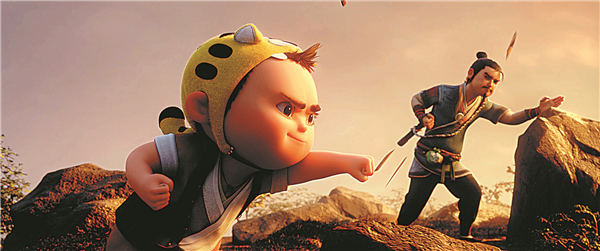A hero of a different stripe
By Xu Fan | China Daily | Updated: 2022-01-28 08:28

Around 370 comedic short videos on the platform, from the character playing with his animal friend, a red-skinned pig, to naughty routines with other martial artists, have helped Hudun to obtain an online fan base of more than 10 million followers, which laid the foundation for the film.
"We dreamed of creating a lovable child character, with typical Chinese features, since the very beginning, so we conducted a lot of research to figure out which traditional or cultural elements would be most representative of Chinese children," says Zou.
The tiger-head hat, a traditional piece of headwear, caught their attention. "In ancient China, people worshiped the tiger and believed a tiger-head hat would protect infants and young children by warding off evil spirits. So, we believed such a hat should be used as a key element in the film," says Zou.
Also a diehard fan of iconic Hong Kong star Stephen Chow's comedy movies, Tsang-a native of Hong Kong-says he was impressed by Chow starring as hooligan Wei Xiaobao, appearing as a storyteller wearing a tiger-head hat, in the 1992 classic comedy Royal Tramp.
As a tribute to Chow, and to the epitome of the golden era of Hong Kong cinema, the animated film Run, Tiger Run! includes a scene in which Hudun acts as a storyteller to recount a legendary tale about five heroic martial artists, drawing an engrossed audience in the center of a bustling street.
One of the film's big draws centers around its compelling recollection of biaoshi, an age-old profession existing for around 1,000 years before it saw an unstoppable decline near the collapse of the Qing Dynasty (1644-1911).
With a strong interest in figuring out more details in the history of the profession, Zou traveled to Pingyao and Qikou, two ancient towns in North China's Shanxi province, where several well-preserved buildings were once assigned to such security details as offices and residences.























